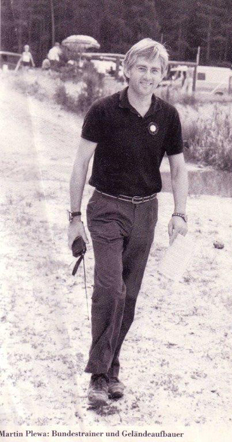 The cross-country course is always at the heart of the Eventing competition. The demands on the horse significantly differ from those in dressage and jumping.
The cross-country course is always at the heart of the Eventing competition. The demands on the horse significantly differ from those in dressage and jumping.
The special feature in the cross-country course is that the horse has to conquer jumps, which are in a strange environment that it has never seen before. In dressage and show jumping the requirements are largely standardized and you can, in training, target practice and prepare the horse well. By contrast, a cross-country horse has to be trained to cope continuously with new and unfamiliar countryside and obstacles.
As a result, every test on the cross-country course has a highly educational value; each start on the cross-country course provides (hopefully positive) experience for the horse, which helps it to gain more self-confidence and understanding for the following courses. Therefore, it is especially important that every cross-country course is suitable to the horse’s level providing an appropriate educational experience for horse and rider. In the process, the horse’s confidence should be boosted with every cross-country jump, which will strengthen and motivate it for upcoming contests.
When planning a course it is crucial to have harmonic lines, which allow for smooth and rhythmic riding. The soil conditions must also be taken into account. Even in extreme weather conditions (very hot or much rain) the ground should remain safe and gentle on the horse’s legs. Next, the Course Designer can start with the planning of the cross-country jumps – taking into consideration the existing natural landscape of the future course. The first single jump should be challenging, to bring the horse to attention for the coming demands of the course, yet still inviting. The next few jumps should continue with this friendly profile, making it easier for the horse and rider to get into a good rhythm, which is so important. The first demanding phase of the course should come after the forth or fifth jump where the balance and rideability of the horse, the precision of the rider and the horse’s confidence with ditches, etc. can be tested.
In the lower levels the horse should only be given one task at each jump. In the higher levels the tasks will be combined, (e.g. a narrow jump as the horse jumps into the water or 2 corner jumps, one after the other, on a narrow winding trail). What is important though; is that every jump has a definite purpose. It has to fill a goal. This could be a relaxing jump after a challenging combination, for example.
The lower the level the less combinations should be used. Obstacles should also be distributed as evenly as possible over the course. It is proven that jumps should be placed approx. 20-40 meters behind a curve; this enhances safety due to the fact that the rider is naturally forced to reduce speed, to bring the horse into a better balance, thereby preparing it mentally for the jump.
While designing a cross-country course as well as the jumps it is advisable to imagine how the horse may perceive the course and how it will observe the obstacles while galloping toward them in a higher tempo. Contrast how the obstacle stands out from its surroundings is very important for the horse’s perception. The horse should be able to recognize the type of jump and its dimensions from a safe distance. The same is true for steps, especially going down and also for water jumps. In the planning, the last jump has to be respectable so that it is taken seriously by horse and rider and must be ridden at a controlled speed. A fast, uncontrolled tempo at the end of the course is regarded as “non-horseman like” and jeopardizes the well-being and safety of the horse.
For further and more detailed information, concerning a professional and fair cross-country course, the brochure “Aufbau und Abnahme von Geländestrecken“ by the „Deutsche Reiterliche Vereinigung e.V. (FN)“ is highly recommended. (Sorry, only available in the German language.)

